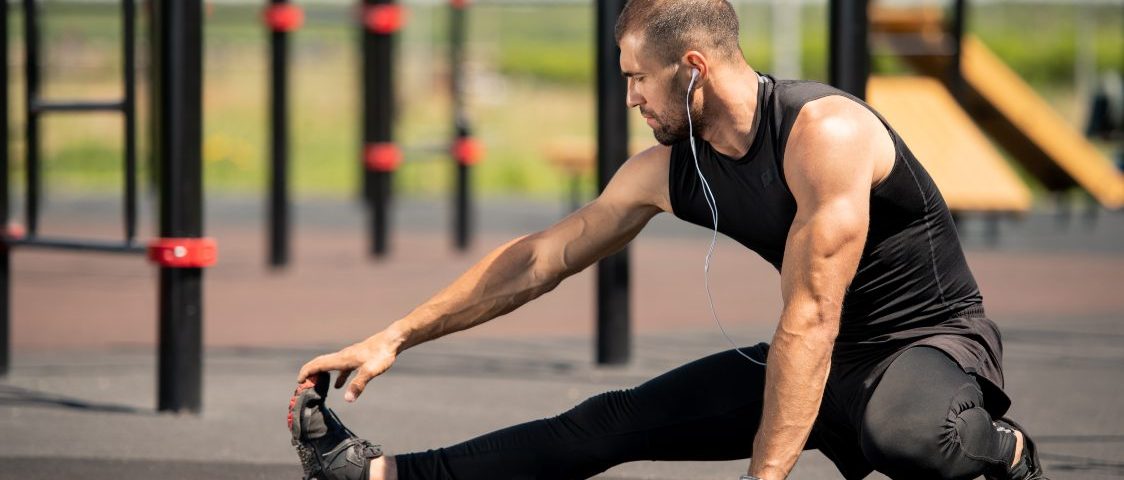
Honey-Chipotle Chicken Burrito Bowls
March 1, 2021
Sleep and Muscle Growth: Everything You Should Know
April 1, 2021Flexibility and mobility are often used interchangeably, but there is a big difference that is important for your growth and performance.
People have used the terms flexibility and mobility interchangeably for years, but given that these two are very different, a push to change the rhetoric and separate these two has begun. We all know it is important to stretch. To stay loose and limber for whatever workout comes our way while also improving our posture and keeping us stable and balanced for those big lifts.
But static stretching and dynamic stretching work differently for us and while both work to lengthen and stretch out our muscles, it is important to really dive into the differences this causes for both mobility and flexibility. Flexibility deals with someone’s ability to move joints effectively through a complete range of motion to allow for a passive movement. Mobility is the body’s ability to move through that range of motion with control, which requires flexibility.
The key for both of these is actually stability. When we sat down with coach and fitness entrepreneur Don Saladino to discuss how to improve posture, he broke down for us the importance of stability. Stability equals strength and by combining flexibility with stability we come out with mobility.
What Is Flexibility?
Flexibility, to put it simply, is the quality of bending easily without breaking. It is the range of motion in a joint or a group of joints to move through a complete range of motion effectively. This typically allows a movement to happen passively, thus allowing us to hold a certain stretch without any pain in that joint or the joints surrounding it (1). This could be anything from holding a static stretch to bending down for something or getting out of bed. Flexibility varies from person to person given the differences in muscle length and can increase with exercise and stretching.
What About Mobility?
Mobility is the ability to move or be moved with ease. The key to longevity, mobility is the ability control the entire range of motion. This requires strength, also known as stability, as well as flexibility to improve that range of motion. This allows us to have total control in order to maximize all of our movements functionally and effectively to lift more without any unwanted pain or strain (2).
Isolated mobility is when a certain muscle or muscle group is mobile. This may work for sport specific movements, but overall mobility should be our goal. This is judged by how balanced your entire body is as a whole and is far more important than only being partially mobile. With overall mobility, you will be able to tackle any position or lift thrown your way to really maximize performance.
Why This Difference Matters?
Many people are flexible, meaning they can hold a certain stretch for a long time and even put their legs behind their heads. But that doesn’t mean they are mobile. Muscles that are flexible may be trying to compensate for areas where stability is lacking. If stabilizer muscles are not strong enough, then we rely on our mover muscles to pick up the slack, resulting in pain or poor posture. This ends up limiting mobility (3).
Since flexibility is the muscles ability to be lengthened, that doesn’t solve our problem with range of motion. Performing a big lift requires our joints to be able to move that weight as effectively as possible and that ability to move through range of motion is where are desire for mobility comes into play. So, if flexibility plus stability equals mobility, then we need to both be able to lengthen our muscles and have the proper strength to support range of motion. Control is key here and that comes through strength, coordination of our muscles and the proper functioning of our stabilizers.
Ways To Improve Mobility
To start, it is important for us to work on both strength and balance to enhance our stability and control, as well as working on flexibility to ensure loose muscles that can lengthen to their optimal capacity. Through proper lifts and a solid stretching routine, whether static or dynamic, we can start to see this change really happen.
For mobility, we should focus on:
- Mobility Drills: These are geared towards range of motion and involve everything from moving, contracting, and relaxing our muscles. They can be isolated for specific areas or work multiple areas at once.
- Stretching: Either static or dynamic, this will work to loosen up any stiff muscles that may be stopping you from moving well. Performing a dynamic stretching routine before your workout can really prime those muscles and a good static stretch post-workout can work to alleviate any muscle soreness and pain that may strike (4).
- Coordination: This is important for you to get your body to act how you want it to. Better coordination with your joints and muscles will increase performance and you will feel more aware of the effects of your training.
- Balance: Through balancing exercises, you will improve stability to provide a solid foundation to give yourself a good base for training. Activities like yoga and Pilates are great for this.
- Massage Techniques: Using a foam roller, massage ball, or a massage gun are great ways to release tight muscles and work to lengthen them to relieve yourself of pain. Looking into a professional massage can also work wonders for you as a massage therapist will know exactly where to target to increase your performance (5).
Wrap Up
While flexibility and mobility may be used interchangeably, they are very different at their cores. Flexibility is the ability to move joints effectively through a complete range of motion, often times passively. Mobility is the body’s ability to move through that range of motion with control, which requires stability. Stability equals strength and building that base is equally as important to mobility as being flexible. A simple equation to remember: Flexibility plus stability equals mobility.
References
- Bushman, Barbara A. (2016). “Flexibility Exercises and Performance”. (source)
- Haley, Jimmy. “The Importance of Flexibility and Mobility”. (source)
- Hodges, P.; Gurfinkel, V.; Brumagne, S.; Smith, T.; Cordo, P. (2002). “Coexistence of stability and mobility in postural control: Evidence from postural compensation for respiration”. (source)
- Harvard Health Letter (2013). “The importance of stretching”. (source)
- National Center for Complementary and Integrative Health. “Massage Therapy: What You Need To Know”. (source)
Source: https://www.menshealth.com/fitness/a35901065/mobility-vs-flexibility/


